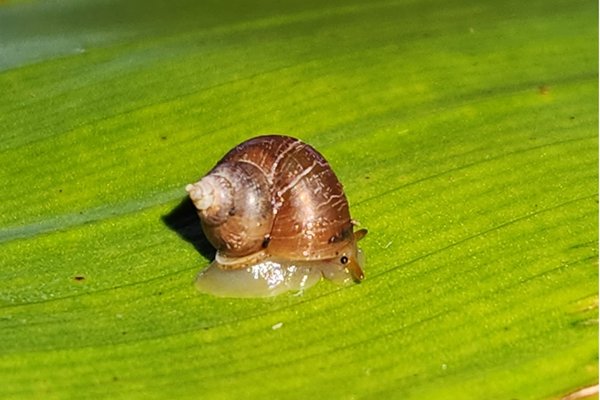Conservation of Australian Snails
Faced with threats of pollution, climate change and urban expansion, scientists must carefully monitor plant and animal populations to ensure their long-term survival. Unfortunately conservation programs tend to overlook some of the most important and most diverse groups of animals – the invertebrates.
Snails and slugs, belonging to the group Gastropoda, are particularly sensitive to environmental change and numerous gastropod species are known to be under threat. There are over 1000 species of snails in Australia and most of them are endemic to Australia.
“99% of all [Australian] species are actually only found here in Australia,” says Dr Frank Köhler, Senior Research Scientist at the Australian Museum Research Institute.

© Australian Museum
Not only are they endemic to Australia, but many species are endemic to small regions. When studying snails in the Kimberleyr region Dr Köhler and colleagues found certain species had home ranges less than 20km across.
Having such small ranges means that even small-scale change to the landscape, such as agriculture or urban developments, have the potential to wipe out entire species. This threat is even more possible considering how little we know about Australia’s snail diversity. When sampling snails in the Kimberley Dr Köhler and his team documented about 170 species, and around 120 of these were completely new to science. Using molecular techniques and studying the anatomy of these snails are powerful tools in uncovering new species that would have not been discernable using traditional taxonomic techniques.
The sensitivity of snails to changes in the environment makes them valuable indicator species for monitoring ecosystem health. If snail populations change in someway it can indicate that the environment is changing in a way that may impact other plants and animals.
Understanding the biology and ecology of snails is crucial for protecting these species in a changing world. Utilising snails as model indicator species also allows scientists to make informed decisions when protecting entire ecosystems and the biodiversity that they contain. Furthermore understanding the biology of these indicator species can provide us with powerful tools to predict the health of ecosystems into the future.
“Because we did this research in snails we understand them so well now… we can use these snails as models to try and understand and predict what the outcomes of climate change in the future may be,” says Dr Köhler.
See below one of our AMRI Scientists Dr Criscione show his passion for research during National Science Week.









